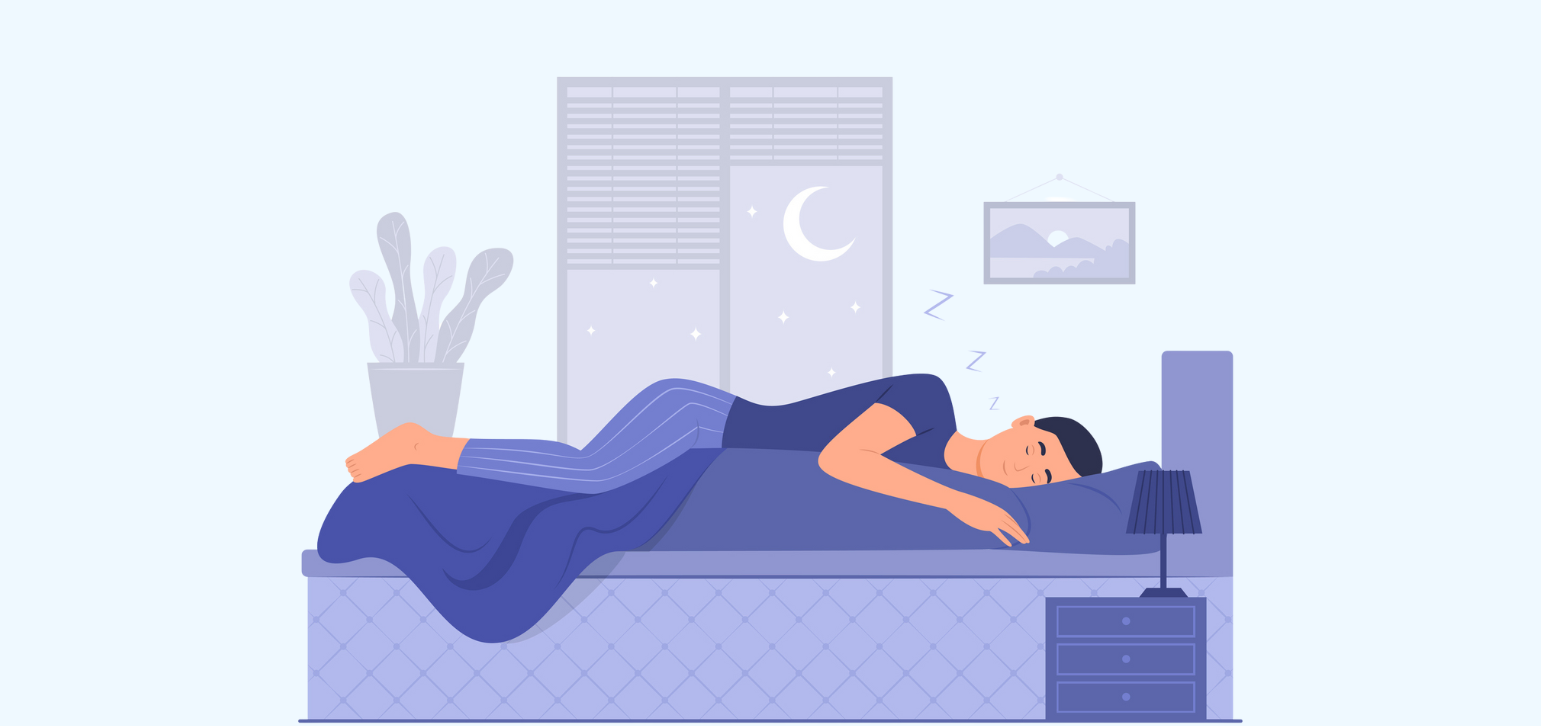
How to Measure Your Apartment for the Ideal Mattress Size

By Kaity Lewis
Jul 17, 2024
Humans spend, on average, about 7 to 8 hours sleeping every day. That is one third of every day spent in bed, while many more waking hours are spent around the mattress in the room. So, finding a mattress that not only fits your sleep needs, but your space needs as well is extremely important.
This article is designed to help direct you toward the ideal mattress size for your space by laying out questions you need to ask yourself when shopping for a bed and a new mattress.
Picking the Right Size Mattress
Within the world of mattresses, there are a variety of pre-measured and widely accepted sizes you can choose from, with the most popular mattress size being the queen. You must consider your body size as well as the room you are filling when making a selection. Taller individuals — those around 6 foot 5 inches or taller — should consider a larger mattress than a queen.
Understanding Standard Mattress Sizes
Below are the general mattress dimensions in the market today:
- Twin-size mattress (also known as a single bed): 38” x 75”
- Twin XL–size mattress: 38” x 80”
- Full-size mattress (also known as a double bed): 54” x 75”
- Full XL–size mattress: 54” x 80”
- Queen-size mattress: 60” x 80”
- Olympic queen size bed: 66” x 80”
- King-size mattress: 76” x 80”
- California king mattress: 72” x 84”
Measuring Your Apartment Space
Finding a mattress that fits your body is important, but as we said earlier, the perfect mattress also needs to fit your apartment space.
This measurement is slightly harder to obtain than your personal preferences for a mattress size. Here is how you can attack the problem of figuring out room size.
Tools You Need
When measuring a room for a mattress, your most important tool will be a tape measure, along with a notepad and pencil to mark down measurements.
If you have access to laser measure tools, these can be great as well, though they are slightly harder to come by than your basic tape measure. Some smartphone apps can be used as well, but nothing will be more accurate than taking the measurements by hand.
Step-by-Step Measurement Guide
Here are some steps to easily tackle the measuring of your room for a mattress:
- Clean out room to easily allow unobstructed measuring and access to corners
- Measure length and width, note any closets/hallways that jut out
- Markdown dimensions; you’ll likely forget them
- Consider room height for bed frame height and mattress thickness
- Consider other furniture in the room, how much space is already accounted for or needs to be added down the road?
- Find a mattress size with dimensions that can work within the space
Best Mattress Sizes for Different Room Sizes
As for step #6, the square footage of the room in question plays a large role in what sizes of mattresses you can place in there.
Below, we’ve split rooms into three categories (small, medium, and large) as well as the mattress sizes that can work comfortably in each of them.
Small Rooms (Up to 100 sq feet)
For small bedrooms with very limited space, mattress options are limited as well. This could be the case in a studio apartment or a small, narrow bedroom. Typically, a standard twin or twin XL bed (the size most popular in college dorm rooms) tends to be the optimal mattress size for such a room.
Space efficiency in a small room is crucial. Consider lofting the mattress to open up more floor space for storage and other furniture — or, if you need to fit more than one twin/twin XL mattress, consider getting a bunk bed situation. Even then, small rooms can fill up quickly with any mattress, which means that you may need to get creative in order to have enough space to store clothing or other belongings.
Multi-use furniture options, such as an adjustable bed base that can double as a sitting place during the day or a Murphy bed that can quickly fold up are other options that leave plenty of space in the center of a smaller room.
Medium Rooms (100-200 sq ft)
Medium rooms can comfortably fit a full or even queen-size mattress. There’s pros and cons to each. For one, the queen would take up most of the space, but will provide great space and comfort come nighttime. The full size would be more space-efficient, but harder for two people to sleep in.
There’s also nothing stopping you from choosing an even smaller mattress; twin mattresses look small in a medium room, but leave plenty of space for extra furniture, toys, storage, or even another mattress.
Large Rooms (200+ sq ft)
If you’ve ended up with the master bedroom in an apartment, you’ll have an easier time finding the right bed. In sleeping spaces this large, just about any mattress fits easily; consider a standard king or even a California king size bed while still having enough room for other items or furniture. You’ll also have your pick of bedframes without needing to worry as much about creative storage solutions. Just keep in mind that, in large rooms, you’ll probably want to invest in more furnishings since the bed won’t properly fill the bedroom due to all the extra space.
Additional Considerations When Choosing a Mattress
While finding the right mattress size for your bedroom space is hugely important, there are other factors at play as well when picking the right mattress.
Both firmness/support and materials can be the difference between a mattress that’s a perfect fit and one that ruins your sleep quality.
Consider the following when making your choice:
Mattress Firmness and Support
Mattress firmness and support are key features of a quality mattress.
The issue is that there is a wide range of personal preferences when it comes to the firmness of mattresses, partially dependent on one’s most-used sleeping position. Some people prefer a stiffer mattress, which can aid with back support (often better for back sleepers). Others like a soft mattress that conforms with their body (which can be more comfortable for side sleepers). It’s important to sleep in comfort, so find which firmness is right for you prior to making a purchase. If you’re planning on sharing a mattress with someone with different needs (and have ample space and enough budget), you can even consider something like a split king bed — which allows you to have different firmness on either side of the bed.
At the end of the day, it's really up to you, but it doesn’t hurt to consult a sleep professional or even a medical professional to learn which option might be best for you before you buy a new bed — especially if you’ve struggled with insomnia or back pain. And if you’ve gotten a mattress that you believe is too firm, try adding on a mattress topper before starting to shop for a new, different mattress.
Mattress Materials
Mattress materials have developed over the years as sleep technology advances to provide consumers with a list of options to pick from.
Each mattress material comes with its own firmness and breathability, as some materials will be hotter or cooler than others. You’ll also find a price difference between materials.
Generally, the top options are:
- Memory foam: Soft and adapts to your body. Typically on the more expensive side.
- Innerspring: Firm and widely available. Cheaper than many other options.
- Hybrid: A good medium-ground mattress provides soft firmness and decent pricing.
- Latex: Slightly firm, but cool. Harder to find than other types.
The Bottom Line
Finding the ideal mattress all starts with a room measurement. Understand the space you are attempting to fill. From there, consider your personal preferences for size, support, and material to help limit the scope of your search even further. Then, you can start shopping for mattresses that fit your requirements until you find the optimal mattress choice.
Top cities
Atlanta Apartments
1,862 apartments starting at $630/month
Austin Apartments
5,958 apartments starting at $600/month
Baltimore Apartments
1,479 apartments starting at $640/month
Boston Apartments
5,616 apartments starting at $425/month
Charlotte Apartments
3,065 apartments starting at $570/month
Chicago Apartments
5,466 apartments starting at $400/month
Dallas Apartments
5,502 apartments starting at $625/month
Fort Worth Apartments
2,696 apartments starting at $695/month
Houston Apartments
5,832 apartments starting at $450/month
Las Vegas Apartments
1,017 apartments starting at $795/month
Los Angeles Apartments
12,826 apartments starting at $750/month
Miami Apartments
710 apartments starting at $1,200/month
Milwaukee Apartments
1,104 apartments starting at $475/month
New York Apartments
8,971 apartments starting at $600/month
Oakland Apartments
942 apartments starting at $850/month
Orlando Apartments
859 apartments starting at $895/month
Philadelphia Apartments
3,602 apartments starting at $500/month
Phoenix Apartments
3,548 apartments starting at $592/month
Pittsburgh Apartments
1,388 apartments starting at $590/month
Portland Apartments
2,267 apartments starting at $575/month
Raleigh Apartments
1,480 apartments starting at $550/month
San Antonio Apartments
3,392 apartments starting at $525/month
San Diego Apartments
2,844 apartments starting at $650/month
San Francisco Apartments
666 apartments starting at $500/month
San Jose Apartments
503 apartments starting at $1,000/month
Seattle Apartments
3,528 apartments starting at $452/month
Tampa Apartments
776 apartments starting at $850/month
Washington DC Apartments
2,295 apartments starting at $910/month


